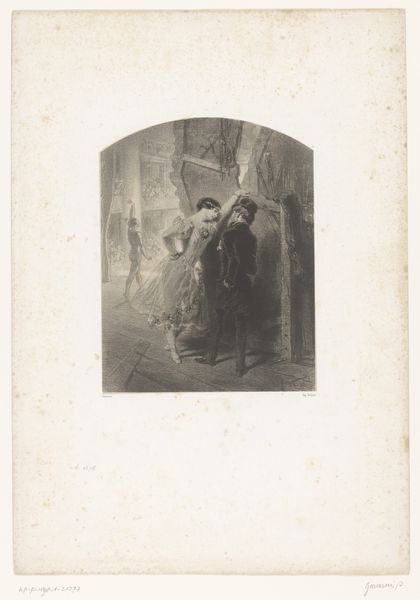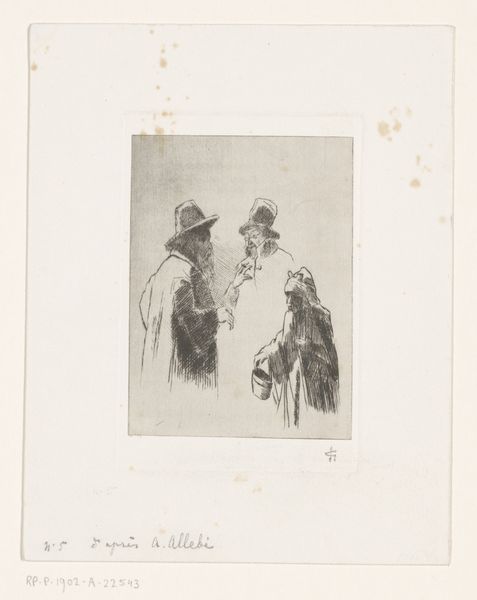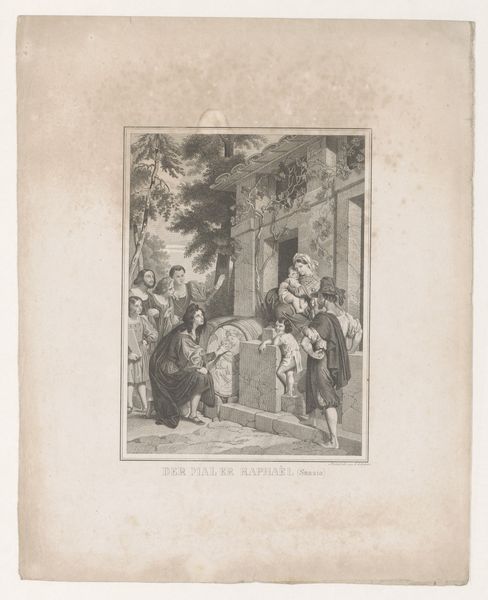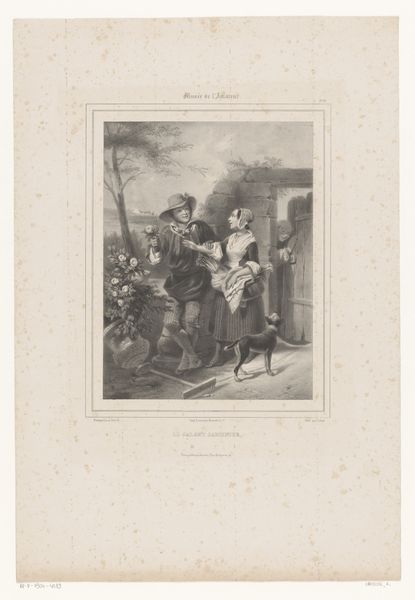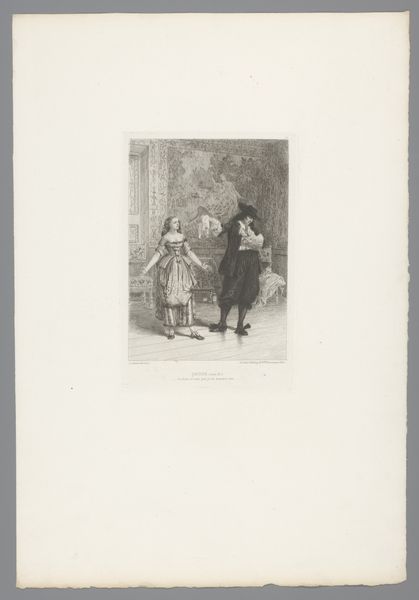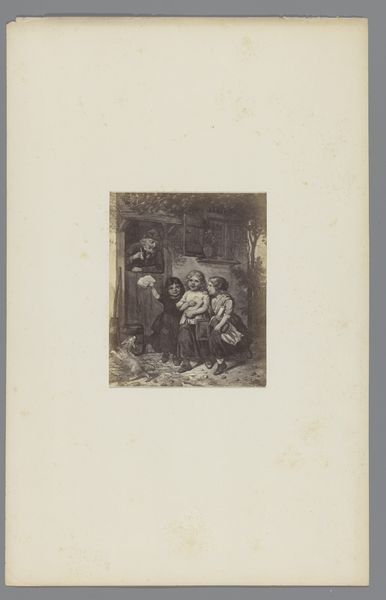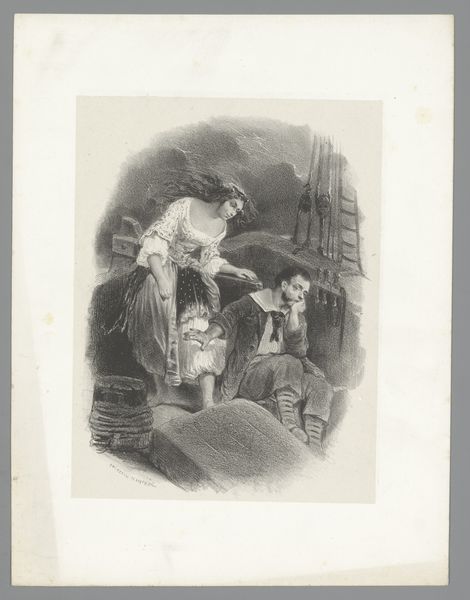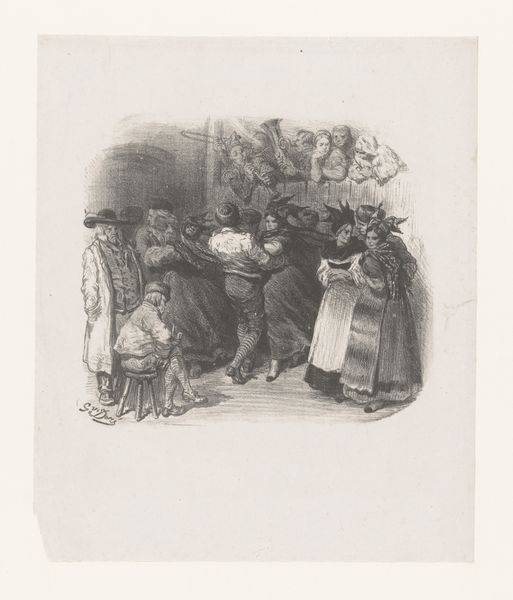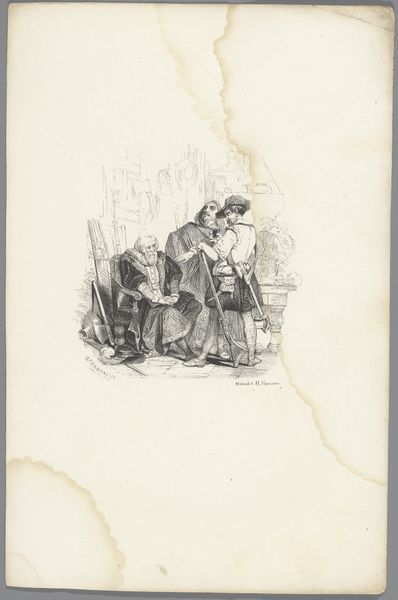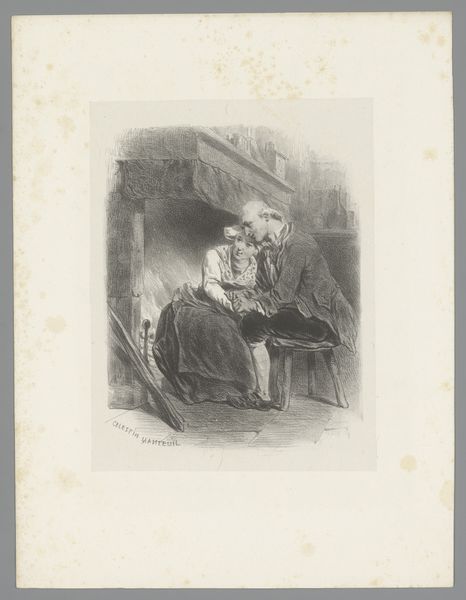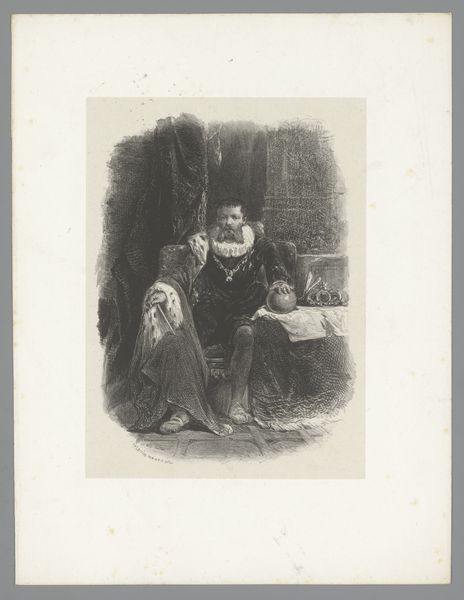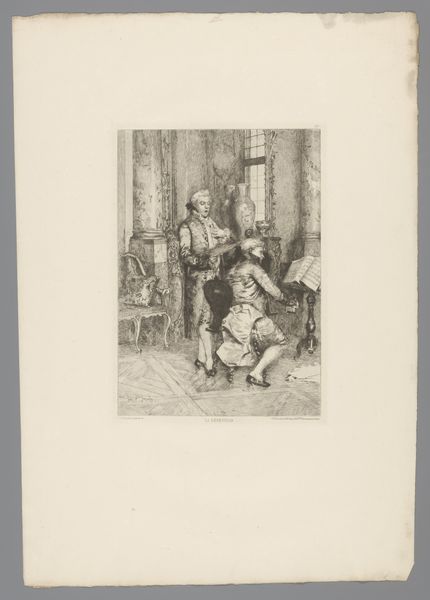
drawing, paper, ink
#
drawing
#
narrative-art
#
figuration
#
paper
#
ink
#
genre-painting
Dimensions: height 323 mm, width 242 mm
Copyright: Rijks Museum: Open Domain
Editor: This is “Vijf verklede kinderen” by Willem Wenckebach, probably created sometime between 1870 and 1937. It’s ink on paper, and I’m immediately drawn to the handmade quality of the image, and the theatrical, almost performative aspect of the children’s costumes. What strikes you most about this work? Curator: It's interesting how the work seems to be preoccupied with labor through its chosen medium of ink on paper – common materials, not inherently precious. What about the children's activity; can we think of costume as labour? These aren’t just costumes, they’re constructed identities using items to hand – brooms, hats, coats. It's less about illusion and more about the practical mechanics of dressing up, of adopting a temporary, playful social role. What do you think this suggests about the world of the children represented? Editor: That's a compelling idea. So the focus shifts from the finished ‘performance’ to the active *making* of the characters. I suppose it implies a world of resourcefulness, where creativity arises from whatever materials are at hand, and play isn't about buying a ready-made costume but constructing something new from existing resources. Curator: Exactly. And we might ask: is this specific to childhood? Does this resonate with wider making activities and social structures beyond the domestic setting? Editor: Hmm, good question. I'm still chewing on how the making relates to the image overall. Curator: Perhaps looking beyond high art helps understand this. Considering craft and its role in society, we can look at materials, social practice, and making—how identities are negotiated with the objects available. And, to ask ourselves how the ready availability of such materials may have since altered play. Editor: That connection to social context – to material access and labor – completely reshapes how I understand this piece. Thanks. Curator: Agreed. Looking closer at the materials encourages broader conversations, highlighting play as labour.
Comments
No comments
Be the first to comment and join the conversation on the ultimate creative platform.
